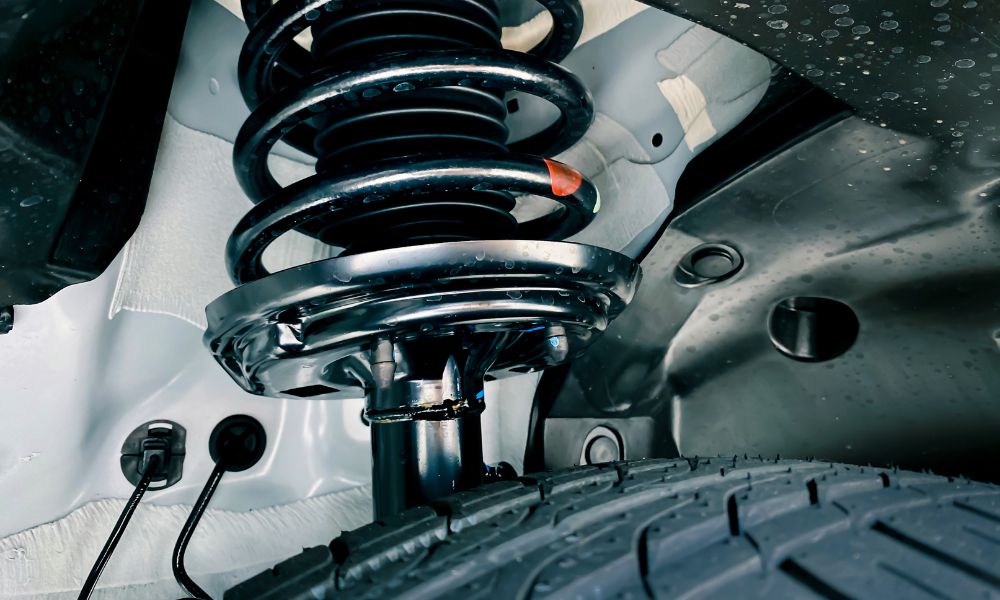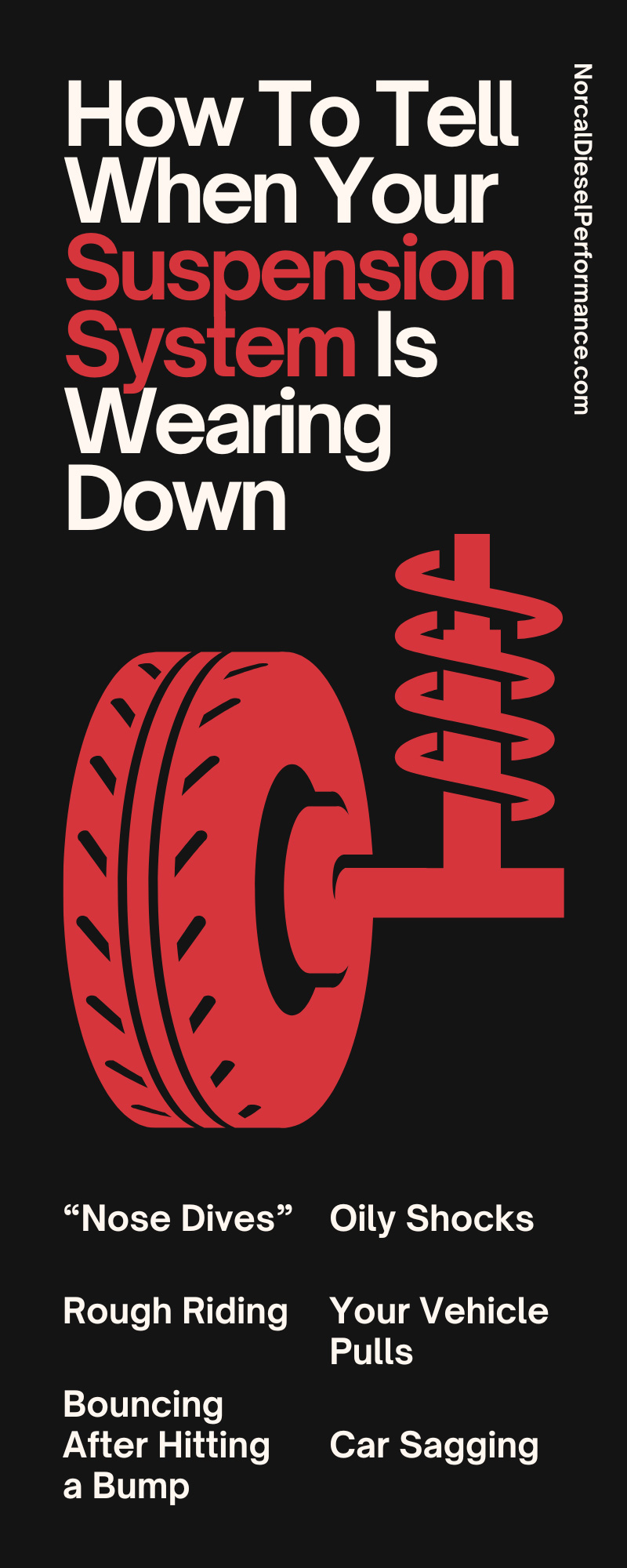


The suspension system in a car is one of the vehicle’s more important pieces, and you will definitely start to notice when it gets a little worn down. You don’t drive your car on smooth roads all day—instead, you encounter a lot of bumps and uneven surfaces. The suspension system makes driving over them easy, but the damage adds up. Continue reading to learn how to tell when your suspension system is wearing down.
Before getting into the warning signs that signify your suspension system is wearing down, it’s important to understand what exactly a suspension system is. The suspension system constitutes all the components that connect the vehicle to the wheels. In addition to connecting everything together, this system provides support when encountering bumps and uneven surfaces on the road.
When you drive over a bump, your car tends to bounce a little—this motion is what the suspension system takes care of. Without a working system, each bump could potentially rattle your entire car, making driving difficult and more susceptible to other damage. This system consists of the following:
These parts work together to counteract the forces that can hurt your car and cause it to roll. For example, the roll bars cross the entire axle of your vehicle, connecting both sides of the suspension. They transfer movement to the opposite wheel when you’re turning to reduce the vehicle’s sway and keep it from rolling. The shock absorbers do a similar job, absorbing extra energy that the springs cannot. This factor minimizes the impact that any bump in the road has on the vehicle.
A common sign of something wrong with your suspension system is nose diving. A nose dive happens when you stop your car and the nose dips further than normal. A small dip is normal since your shocks absorb the sudden deceleration. However, your vehicle will dip much more when you have worn shocks. It’s important to check this warning sign out sooner rather than later. Worn-out shocks causing nose dives can make stopping your vehicle incredibly difficult in some emergency situations.
A rough drive is one of the more common symptoms that your suspension system needs replacing. Bumps and sharp turns are not the easiest to experience in any vehicle, but the suspension system makes them bearable. With a functioning system, you may feel the bump for a moment before you’re driving smoothly again. If you notice that the normal roads you drive on become much bumpier, or if you bounce much longer when you hit a bump, the suspension system might need attention.
Driving like this is uncomfortable, but it can also be dangerous. Unfortunately, it may be hard to spot at first because you may think the road is just a little bumpier. Thankfully, there’s an effective way to test rough riding home. All you need to do is push down on a corner of your vehicle and see how many times it bounces before stabilizing. Excessive bouncing, which you can define as bouncing more than twice, is a good sign that it’s time to replace the shocks.
You can test this excessive bouncing in your driveway or garage, but you’ll encounter it on the road more often than not. The road is full of bumps, potholes, and debris that are just waiting for you to run over them. If you can’t avoid these hazards, you will typically only experience a small bump or two before your vehicle is driving like normal again. Alternatively, if your suspension is a little worn down, these bumps will result in a lot of bouncing that takes some time to stabilize. Bouncing like this can happen because the suspension is too old or because of more specific problems, such as a damaged leaf spring.
Shock absorbers and dampeners use oil and gas to absorb energy from the springs. These parts do this through a system of valves, but sometimes those valves can leak, creating issues with their ability to absorb energy. It may be hard to see this issue at first, but you can easily spot it once you know what the shocks look like and what to look for.
They are generally next to or in the springs of your suspension system, and noticing if they’re greasy takes a simple swipe of a finger or paper towel. If they are greasy and oily, there is a leak somewhere, or they’re not working correctly. Either way, it’s time to replace them or take your vehicle to the mechanic.
One large side effect of your suspension system not working is that your vehicle pulls to one side. Unfortunately, this symptom means that the issue could also be due to something else. A worn suspension and steering system cause this pulling, but so does uneven tread wear on your tires and wheel alignment.
Thankfully, determining which problem it could be is somewhat easy. You can go the quick route and take it to a mechanic so they can diagnose the problem, or you can investigate yourself. Determining tire tread requires measuring each tire and seeing if there’s a significant difference. Similarly, you can notice other signs if your wheel needs realignment. In addition to pulling to one side, you can determine if:
If you don’t start noticing these other symptoms, the suspension system is likely the culprit behind your vehicle pulling.
Similar to pulling to one side, you may also notice that your car is lower in one corner. It could be because of a tire inflation issue, but it may also mean something is wrong with part of your suspension system. Something, whether your struts, shocks, or springs, is off. Failing to address this problem quickly could lead to worse issues, such as rolling over or a blown-out tire.
After learning the warning signs, you can easily tell when your suspension system is wearing down and when you need to check it out! The suspension system needs to be in the best condition for you to drive with confidence. You also need a high-quality steering system to drive smoothly. At Norcal Diesel Performance, we have you covered—we carry Duramax steering parts and the suspension parts you need as well!

You must login to post comments.